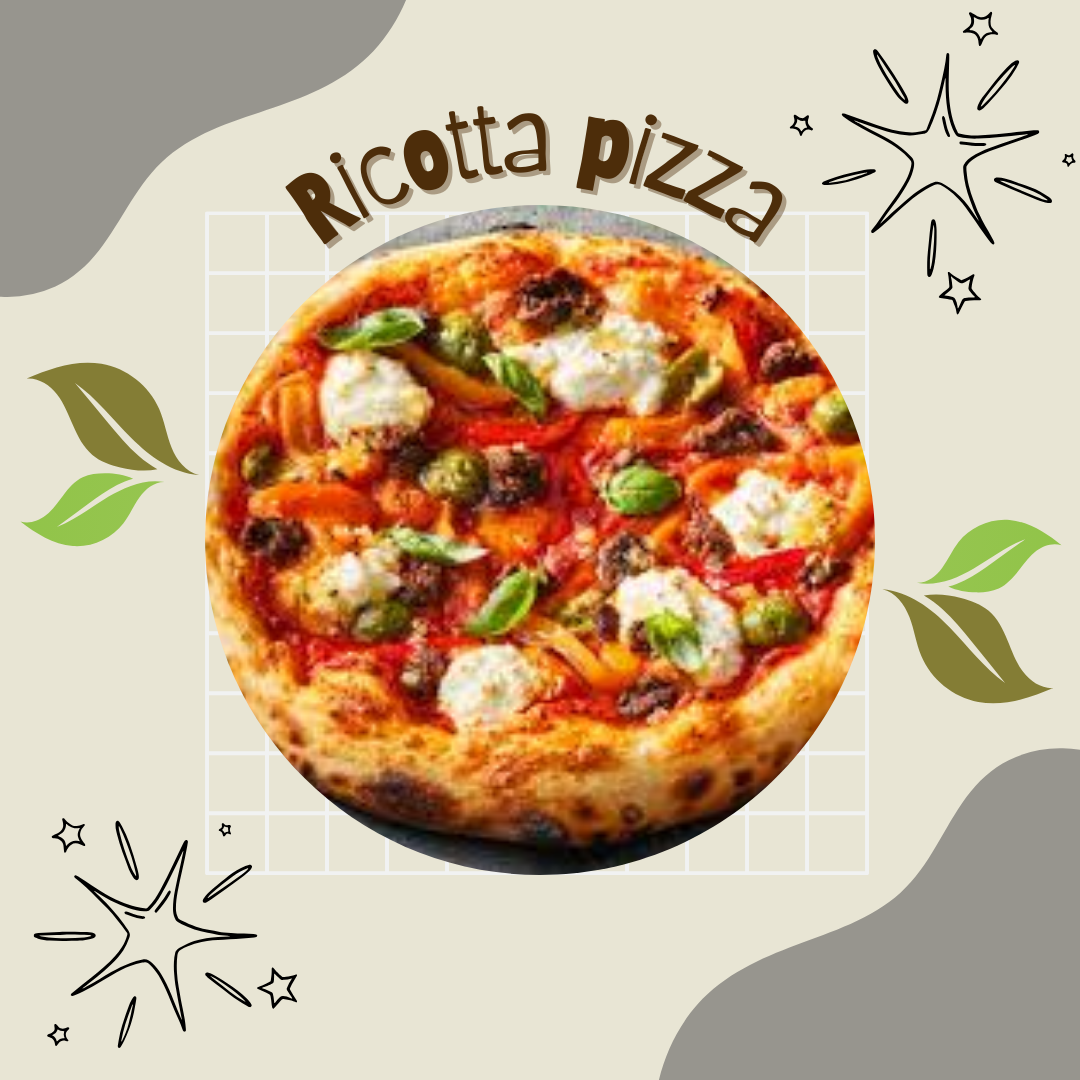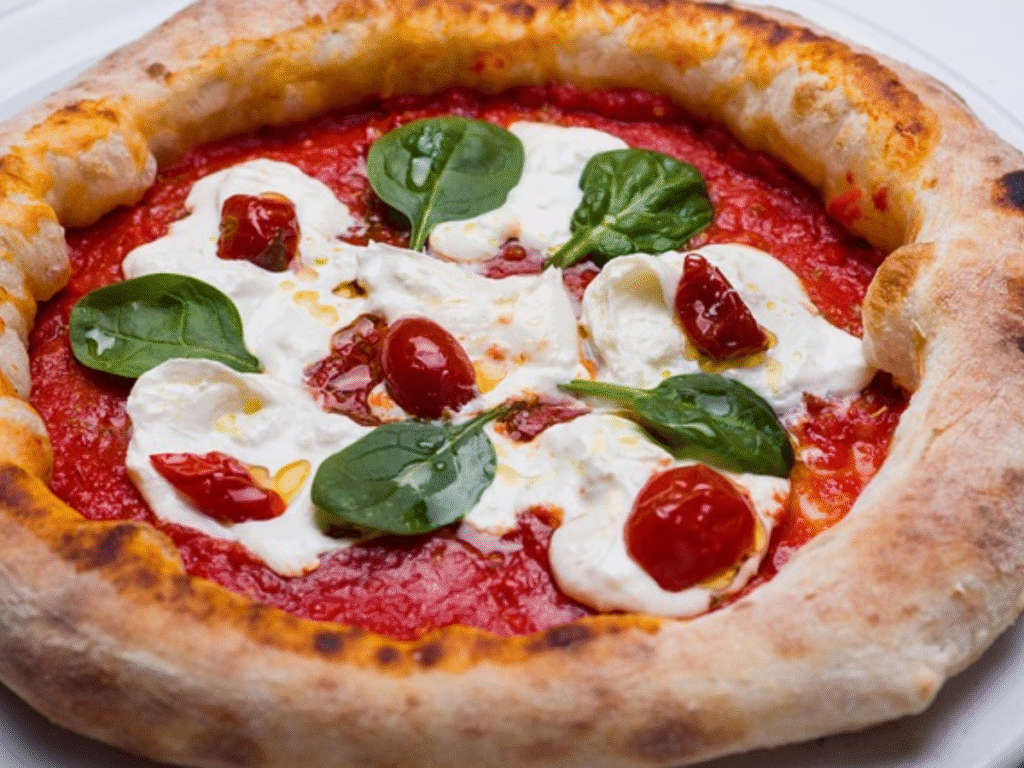
Introduction
Few dishes feel as comforting and indulgent as a freshly baked Ricotta pizza. This Italian classic combines a light, creamy texture with a subtle sweetness that perfectly complements savory toppings. The star ingredient, creamy ricotta cheese, creates a luscious base that pairs beautifully with herbs, vegetables, or even meats, offering endless possibilities for customization.
Many home cooks love preparing this dish during homemade pizza night, not only for its simplicity but also for the gourmet results it yields. Whether layered on a traditional crust or adapted into a gluten-free pizza, ricotta elevates every slice into something extraordinary, making it a must-try Italian pizza recipe.
Watch this YouTube video tutorial to learn how to make Ricotta pizza at home.
What Is Ricotta Pizza?
Ricotta pizza is often referred to as a white pizza because it typically uses cheese and olive oil instead of tomato sauce. The star is creamy ricotta cheese, which adds richness without overwhelming the crust. This style has roots in the Italian pizza recipe tradition, where fresh dairy and seasonal greens are celebrated.
Many people ask, “Is ricotta good on pizza?”, and the answer is always yes. Unlike other cheeses, ricotta keeps its shape during baking, creating delicious dollops that contrast with stretchy mozzarella. The result is a light yet satisfying dish that feels gourmet but remains simple enough for any homemade pizza night.
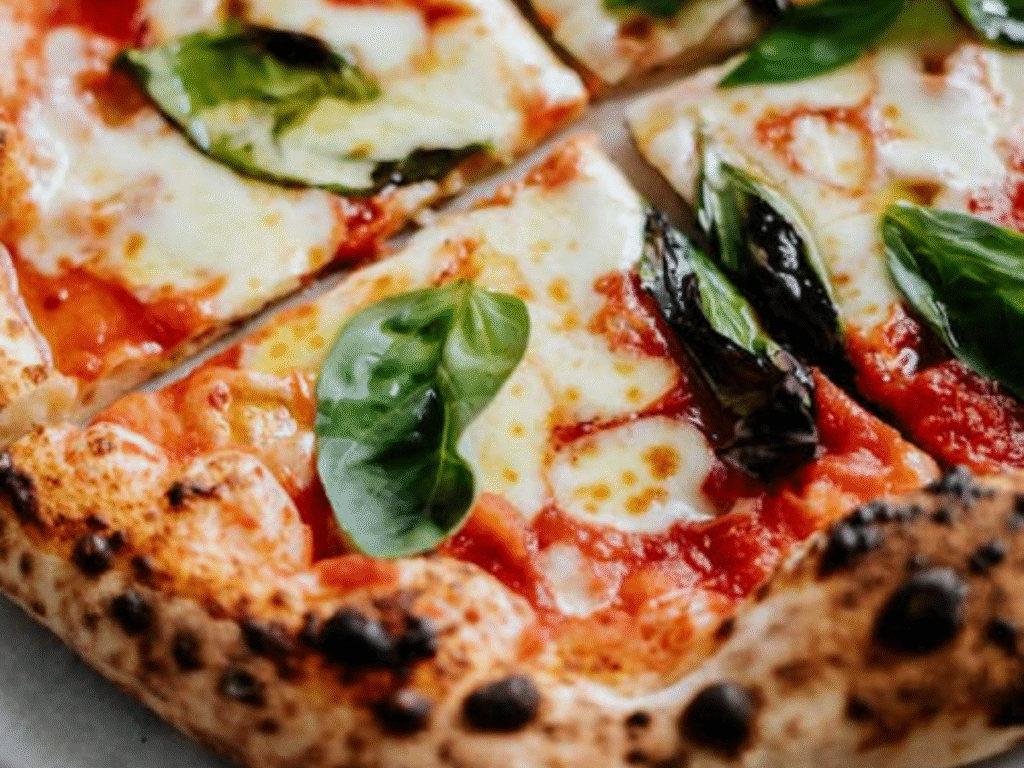
Why You’ll Love This Recipe
This easy ricotta pizza recipe balances fresh vegetables with melty cheese. The crust turns into a crispy, golden crust, while toppings like sun-dried tomatoes and fresh basil leaves brighten each bite. It’s hearty enough for dinner but light enough to enjoy without guilt.
You’ll also love how versatile this pizza is. Whether made with a whole-wheat pizza crust, a traditional base, or even a broccoli pizza crust for a low-carb option, it adapts to your needs. It’s a meal that feels like comfort, but also resembles a pizza that resembles the Italian flag.
My First Homemade Ricotta Pizza Experience
I still remember the first time I baked homemade ricotta pizza for my family. The kitchen filled with the aroma of olive oil drizzle, bubbling mozzarella cheese topping, and baby spinach leaves wilting gently on the crust.
When I served it, the colors resembled a pizza that resembled the Italian flag, and the smiles at the table said everything. Since then, this recipe has become our go-to for homemade pizza night, because it feels special yet easy enough for a busy weekday.
Key Ingredients for Ricotta Pizza
- 1 ball of homemade pizza dough or whole wheat pizza crust
- 1 cup creamy ricotta cheese
- 1 cup mozzarella cheese topping (shredded)
- ½ cup sun-dried tomatoes (chopped)
- 1 cup baby spinach leaves (lightly sautéed in a skillet)
- 2 tbsp olive oil drizzle
- 2 tbsp basil leaves, fresh, torn
- 1 tsp garlic powder seasoning
- ½ tsp red pepper flakes
- ½ tsp flaky sea salt / kosher salt
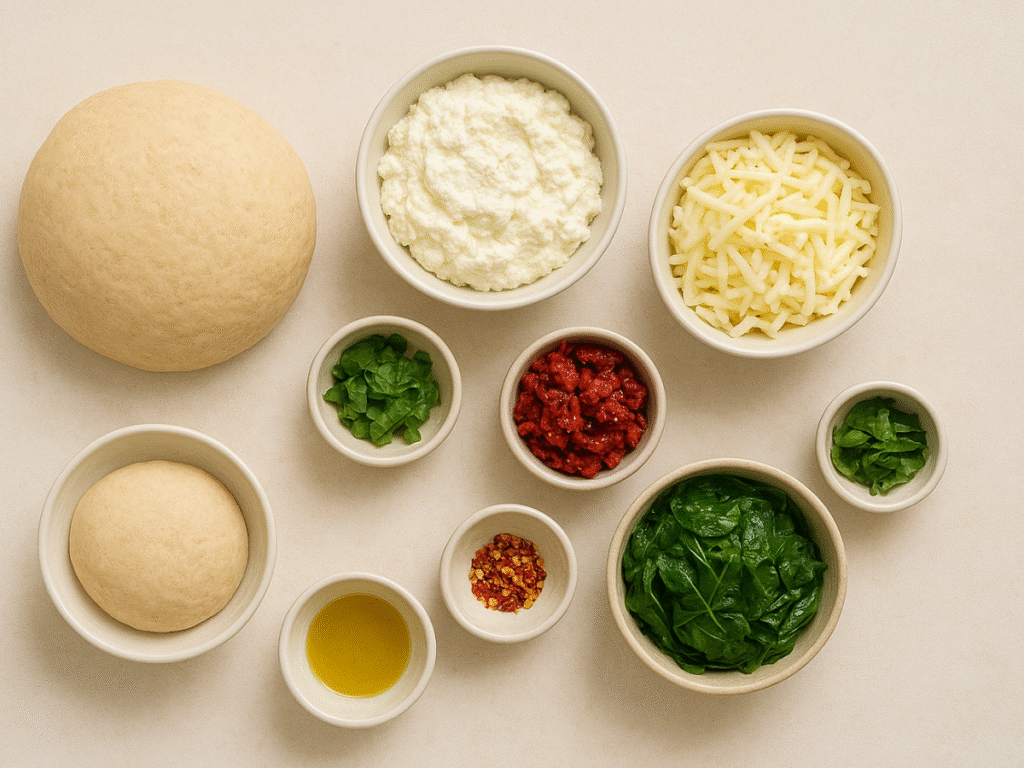
Step-by-Step Instructions to Make Ricotta Pizza
- Preheat oven to 475°F (best oven temperature for pizza at home) and place a pizza stone or baking tray inside to heat.
- Roll out the dough into a thin round and place it on parchment paper for easy transfer.
- Spread creamy ricotta cheese evenly across the base.
- Sprinkle garlic powder seasoning, then top with baby spinach leaves, sun-dried tomatoes, and half the mozzarella cheese topping.
- Add the rest of the cheese and a light olive oil drizzle.
- Transfer the pizza onto the hot stone and bake for 12–15 minutes until a crispy golden crust forms.
- Remove from oven, top with fresh basil leaves, and finish with red pepper flakes and flaky sea salt.
- Using a pizza cutter, cut into slices and serve hot.
Best Toppings for Ricotta Pizza (White Pizza Ideas)
Classic combinations never fail. Consider healthy ricotta pizza toppings, such as baby spinach leaves, fresh basil leaves, and mozzarella. For something richer, kale or Swiss chard pizza works well. The combination of leafy greens with creamy ricotta is both hearty and balanced.
For those who love meat, you may wonder, “What meat goes with ricotta pizza?”. Grilled chicken, prosciutto, and Italian sausage are all excellent choices. Adding meat transforms the pizza into a satisfying main dish while preserving the signature flavor of ricotta.
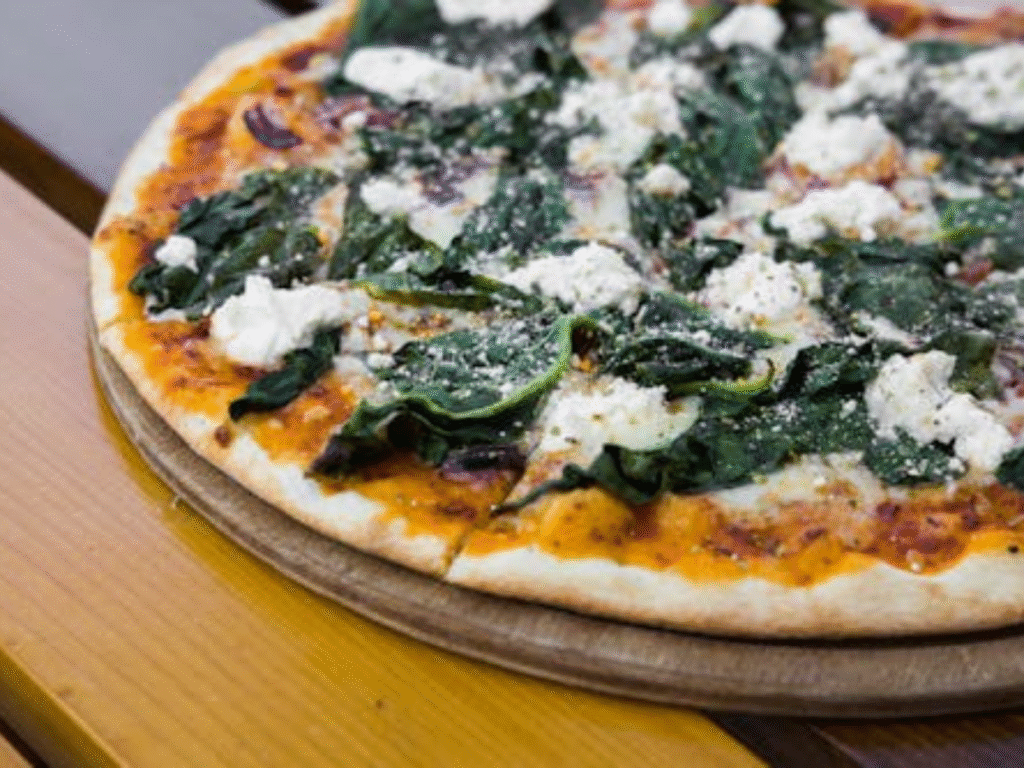
Pro Tips & Chef’s Notes
Many readers ask, “Ricotta on pizza before or after baking?”. Always add ricotta before baking, so it bakes gently and retains its shape. Using too much ricotta may make the pizza heavy, so balance is key. Light dollops create pockets of creaminess without overpowering the crust.
For even better results, remember a few pro tips for homemade pizza. Use a pizza stone baking method for crispness. Rotate the pizza halfway during cooking. Always season ricotta with flaky sea salt / kosher salt to prevent a bland flavor. These small steps elevate the entire dish.
Dietary Notes (Vegetarian, Gluten-Free Options)
This pizza naturally fits a vegetarian pizza recipe since it highlights cheese and vegetables. Those avoiding gluten can enjoy a gluten-free pizza by swapping the base with almond flour or a premade gluten-free crust.
For those following carb-conscious diets, a broccoli pizza crust or cauliflower version works beautifully. These create a low-carb pizza option that retains the same flavors while offering a lighter texture.
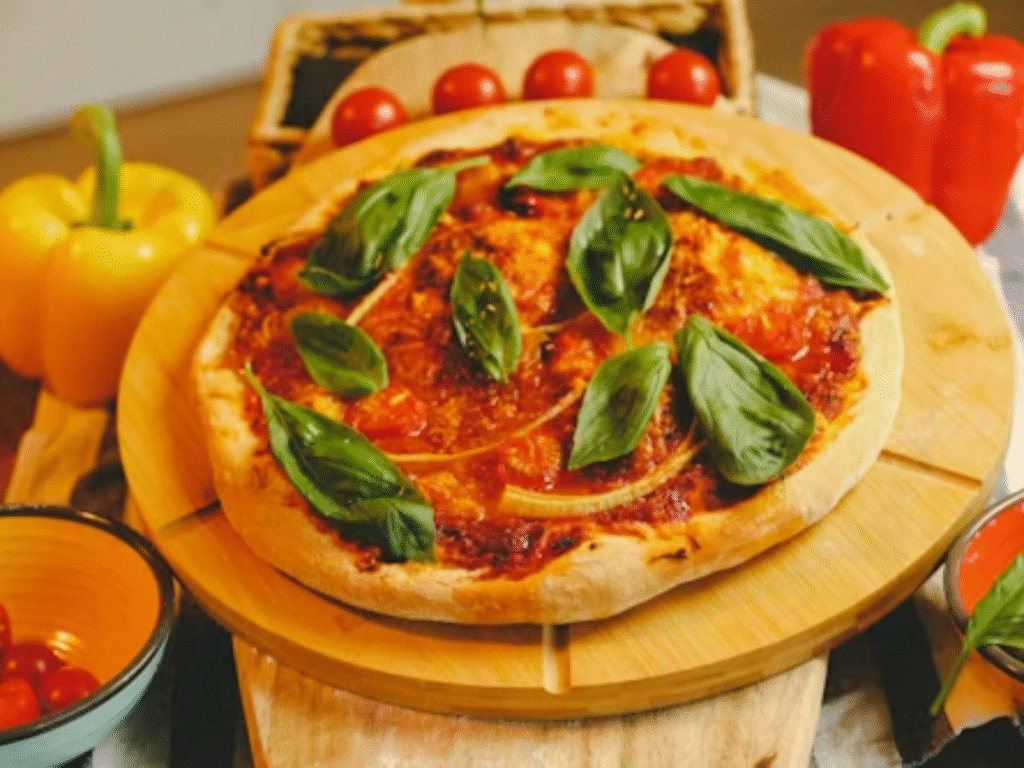
Nutrition Facts (Per Slice of Ricotta Pizza)
Nutrient | Amount |
Calories | 320 kcal |
Protein | 15 g |
Carbohydrates | 28 g |
Dietary Fiber | 3 g |
Total Fat | 14 g |
Saturated Fat | 6 g |
Calcium | 180 mg |
Sodium | 520 mg |
Ingredient Substitutions & Variations
Spinach is classic, but many cooks explore substitutes for spinach in ricotta pizza. Choices like kale or Swiss chard pizza, arugula, or roasted zucchini all add variety. Each brings its own flavor while complementing the creaminess of ricotta.
Cheese substitutions are endless. Swap mozzarella with burrata for a creamier bite, or use parmesan for a sharper taste. Even adding roasted garlic or caramelized onions provides a gourmet twist that feels like a new recipe every time.
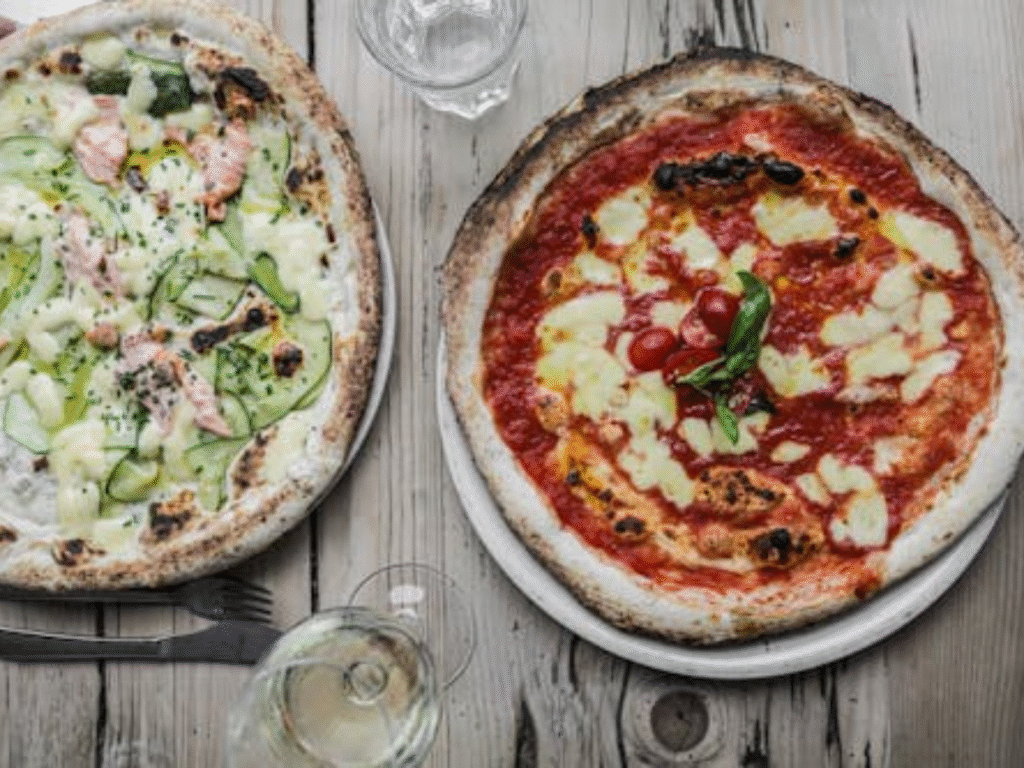
Storage and Reheating Tips
Good storage tips for pizza leftovers make all the difference. Store slices in an airtight container for up to three days, or freeze for up to three months. Many wonder, “Can you freeze ricotta pizza?”, and the answer is yes. Properly wrapped slices retain flavor and texture when reheated.
When it’s time to enjoy again, the question becomes “how to reheat leftover pizza”. Skip the microwave if possible. Instead, place slices in a hot oven at 450°F for six minutes. This method revives the crust and melts the cheese evenly.
What to Serve with Ricotta Pizza
Pairing sides enhances the meal. A crisp salad with arugula, cherry tomatoes, and balsamic vinaigrette cuts through the richness of cheese. Soups like minestrone or tomato basil also complement pizza beautifully.
Italian starters bring variety. Garlic bread, antipasto platters, or marinated olives create a restaurant-style spread. Drinks like sparkling water, red wine, or even light cocktails balance the flavors, making any homemade pizza night memorable.
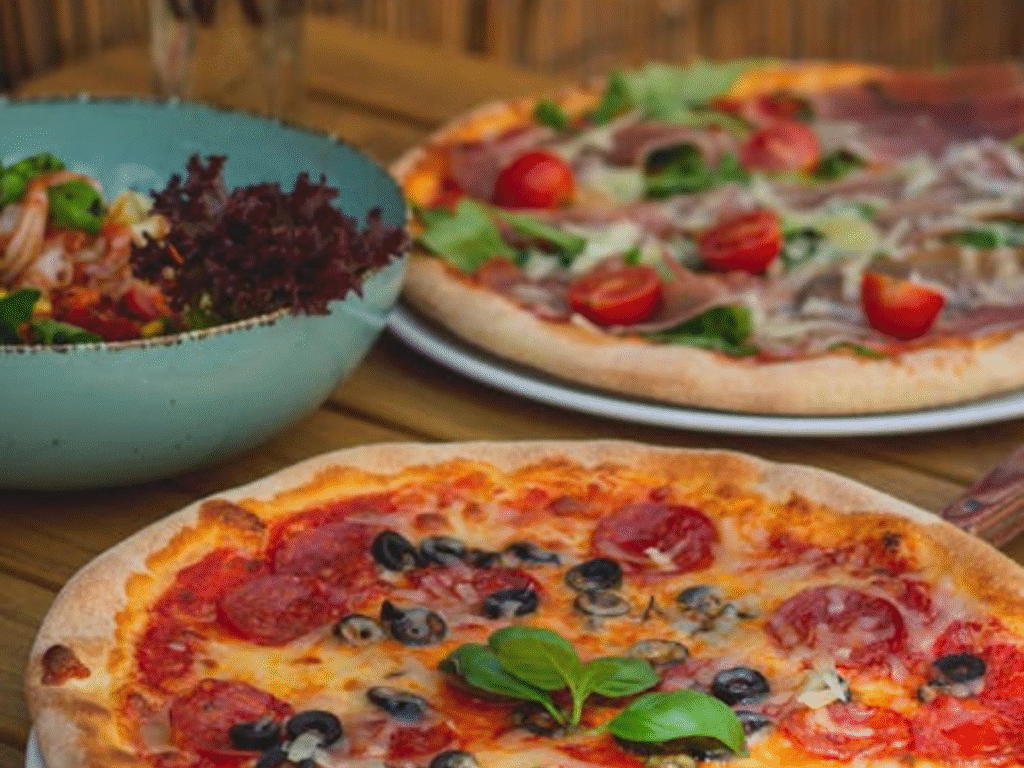
Common Mistakes to Avoid
Even the best cooks slip up. One error is piling on too many toppings, which prevents a crispy golden crust. Another is forgetting the salt, which leaves the ricotta flavor flat. Also, baking at too low a temperature robs the pizza of its blistered edges.
A frequent mistake happens with dough. If cold dough is stretched too quickly, it bounces back and tears. Always let the dough rest at room temperature before shaping. These small details turn a good recipe into an outstanding dish.
Ricotta Pizza Recipe Card
Details | Information |
Prep Time | 20 minutes |
Cook Time | 15 minutes |
Total Time | 35 minutes |
Servings | 4 slices |
Cuisine | Italian |
Course | Main Course |
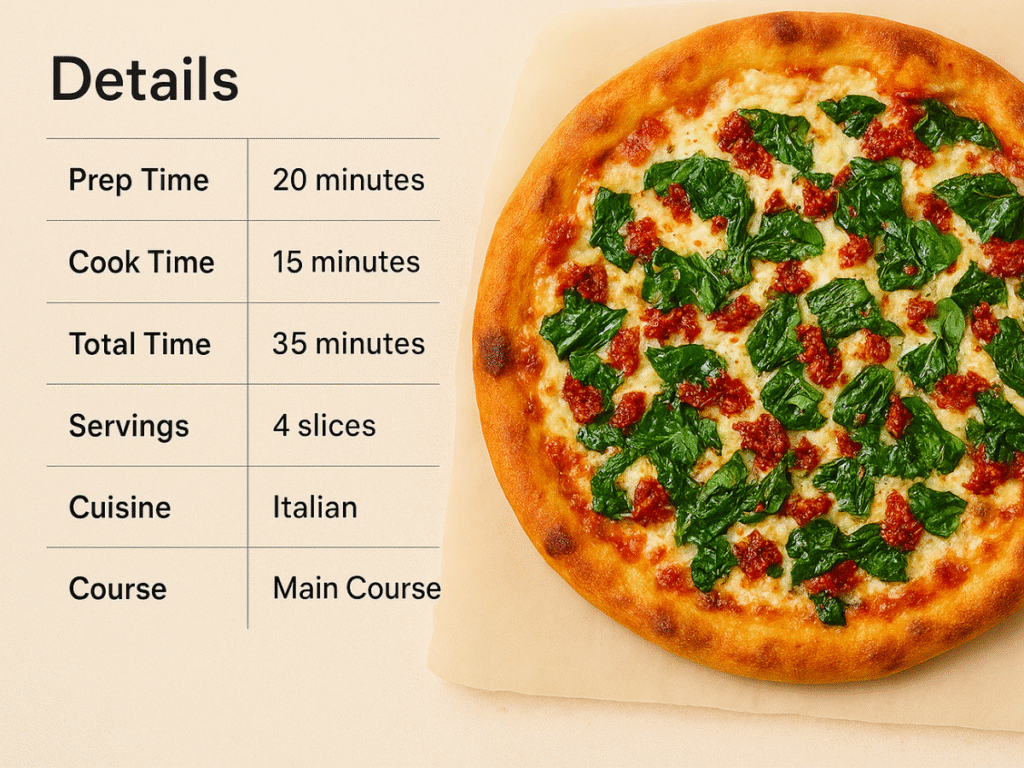
FAQs
Is ricotta good on pizza?
Yes, ricotta is excellent on pizza because it adds a creamy texture and mild flavor that balances stronger toppings, such as garlic, spinach, or sun-dried tomatoes. Many people love it in white pizza since it blends perfectly with the mozzarella cheese topping.
Do you put ricotta cheese on pizza before or after cooking?
Most recipes spread ricotta on pizza before baking, allowing it to melt slightly and blend with other cheeses. However, some chefs like to dollop it after baking for a fresher, creamier bite. Both ways are delicious—it depends on your preference.
What pizza sauces pair well with ricotta?
Ricotta pairs beautifully with a variety of sauces. Classic marinara, garlic cream sauce, and even olive oil drizzle work well. For a lighter taste, many people prefer a white pizza without tomato sauce, letting the ricotta shine with fresh herbs.
How do Italians eat ricotta cheese?
In Italy, ricotta is enjoyed in both savory and sweet dishes. Italians use it on pizza with fresh basil leaves, in pasta fillings, or spread on bread with honey. On pizza, it’s often combined with spinach, mozzarella, and sun-dried tomatoes for a traditional touch.
What does ricotta taste like on pizza?
Ricotta on pizza tastes light, creamy, and slightly sweet, which balances salty toppings and creates a smooth contrast with the crispy golden crust. It doesn’t overpower the flavors, making it perfect for those who prefer a mild yet rich pizza experience.
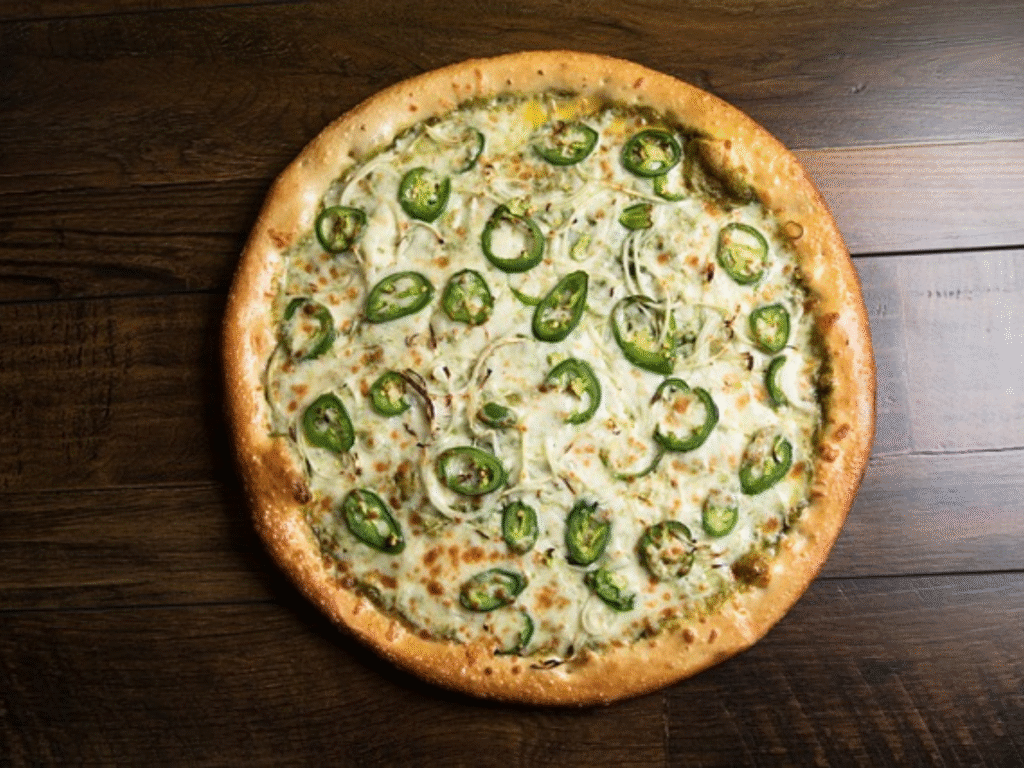
Conclusion
Homemade Ricotta Pizza is more than just another Italian pizza recipe—it’s a dish that brings comfort, freshness, and a touch of gourmet flair right into your kitchen. With its balance of creamy ricotta cheese, vibrant vegetables, and a crispy golden crust, every bite feels indulgent yet wholesome.
Whether you prepare it with a whole-wheat pizza crust, opt for a gluten-free pizza option, or try unique toppings like sun-dried tomatoes and fresh basil leaves, the result is always satisfying.
Now is your chance to make this dish a reality. Gather your favorite toppings, fire up the oven, and enjoy your own homemade pizza night. Don’t just bookmark this recipe—share it with family and friends so they too can taste the magic of ricotta on pizza.
If you try it, leave a comment or rating to let others know your twist. Delicious food is always better when shared with others.
